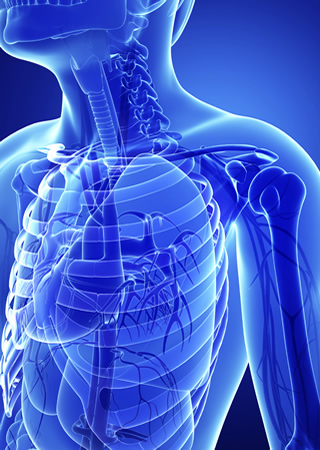Physical Rehabilitation and Cancer Symptom Management
An interview with Sean Smith, M.D., Department of Physical Medicine & Rehabilitation

How would you define physical medicine and rehabilitation, or PM&R, as it relates to cancer symptom management?
PM&R doctors, called physiatrists, ARE symptom management doctors, but they also diagnose and treat a variety of physical conditions. Our expertise is used for patients with conditions that affect the brain, spine, muscle and bones. We also help patients with nerve damage or serious scar tissue. So you might find physiatrists in sports medicine, but you will also find us treating conditions like cerebral palsy, spinal cord or burn injuries. For all our patients, we look at nutrition, pain management and range of motion, and may order tests or treatments to optimize patients’ ability to move and reduce pain or fatigue. Our goal is to improve and maintain function by diagnosing and treating side effects of these various medical conditions.
So it’s not a big jump to offer our medical services to people who have cancer. In fact, more and more physiatrists have a sub-specialty in cancer symptom management. We want cancer patients to know that they don’t have to resign themselves to living with pain or physical impairment.
As a physiatrist, how are you integrated into the Rogel Cancer Center’s symptom management approach for patients? Do you sit on tumor boards?
In addition to having my own clinic in the Burlington Office Center on Eisenhower, I’m in the Rogel Cancer Center’s symptom management clinic weekly to manage or co-manage patients. I also work closely with the Neuro-Oncology Clinic in the Rogel Cancer Center and the Bone Marrow Transplant Program at Mott, where some patients experience physical or cognitive side effects of chronic graft-versus-host disease. I also attend the weekly sarcoma tumor board, which gives the advantage of being able to consult with the rest of the medical team in advance of a patient’s surgery and to talk to the patient about post-surgery recovery when indicated. We are expanding PM&R services to other clinics at the cancer center by recruiting another physiatrist with a sub-specialty in cancer symptom management.
How are you involved with symptom management, and what clinical experts or services might be part of a cancer patient’s care plan?
As part of the symptom management team, I oversee referrals, prescriptions, braces/splints, and diagnoses related to physical medicine, and coordinate services from occupational therapy, physical therapy, speech pathology and the lymphedema team.
Can you give me some examples of what would go on when you meet with a patient, what you might order and how long the patient might be in your care?
It varies by treatment. A patient with head and neck cancer involving resection and radiation, for example, might have restricted arm movement that responds quickly to treatment. Someone with radiation fibrosis, a side effect of radiation therapy, can have lasting damage to the nerves, spinal cord or muscles that results in chronic pain. I review the oncology treatment plan prior to seeing each patient. Then, after meeting with and examining the patient, I can determine what kinds of musculoskeletal, neurologic or cognitive improvements we want to strive for. There may be some tests, such as an MRI. Treatments can range from injections, braces or splints, to referrals for physical or occupational therapy, or for medical management. I continue to see the patient for a time in order to monitor the response to treatment or to see if something else is needed, but if a condition becomes chronic, I continue to follow the patient.
